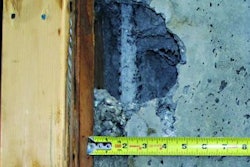Construction spending increased by 1.4 percent between July and August and was up 0.9 percent compared to August 2010, the Associated General Contractors of America reported in an analysis of new Census Bureau data. Association officials noted that despite this month's increases, public sector activity has declined even as private sector demand has steadily increased this year.
"There is no doubt that declining public sector demand for construction is dragging down the entire construction industry," the association's chief executive officer, Stephen Sandherr, said. "If it wasn't for the modest increase in private sector demand, the hard hit construction industry would be in much worse shape this year."
Sandherr noted that total construction spending in August 2011 was $799.1 billion, compared to $788.3 billion in July and $791.7 billion in August 2010. Private sector construction spending increased by 0.4 percent between July and August from $508.9 billion to $511.0 billion, and is up 5.6 percent compared to last year. Meanwhile, public construction spending went from $279.4 billion in July to an annual rate of $288.2 billion in August, a 3.1 percent increase, but remains down by 6.3 percent compared to last year.
Spending on power construction experienced the largest private sector increase (25.9 percent), while spending on lodging declined by more than any other sector of private construction (31.7 percent). In contrast, publicly funded health care construction activity grew by 12.8 percent while investments in the two largest public segments—highway and street and educational construction—fell 4.5 percent and 4.0 percent, respectively.
Association leaders cautioned that cutting investments in infrastructure and other public assets could prove counterproductive, since taxpayers would ultimately have to pay more to repair broken facilities than they would to maintain them now. They urged Congress and the Administration to instead focus on reforming infrastructure programs to make them more efficient and effective.
"We are running the risk of leaving a legacy of closed bridges and decayed schools for future generations," Sandherr said. "Instead, we need to fix our broken entitlement programs and at the same time focus our infrastructure investments on where they are needed most."


















